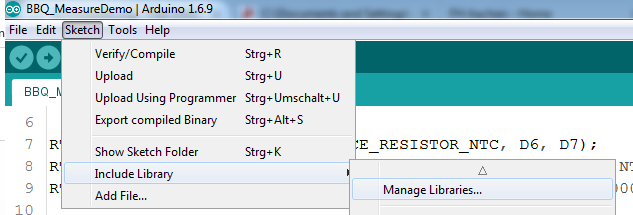5. Getting started with Arduino IDE
The Arduino IDE is a really simple programming environment. Arduino projects are called “sketches”. Main features of Arduino IDE are:
5.2. Managed and unmanaged Libraries
The Arduino project provides a lot of libraries which are version
managed. These libraries are available via the Library Manager in the
Sketch menu.

Fig. 5.14 Arduino Library Manager
With the Library Manager you can search for libraries and install them. Also library updates can be installed with this tool.
Unmanaged, own or third party libraries are supported as well. These can be placed in the user folder.
..\Documents\Arduino\libraries\
After adding a new library into this folder, a restart of the IDE is necessary.
5.3. Serial monitor and Serial plotter
With the serial monitor you have a direct access to the serial port. Via serial port you can exchange information between the developer and the program running on the board. It is mostly used for debugging software or exchanging data between a pc program and the Arduino board.
The serial plotter is a really simple tool which is able to plot a
received number in a time series diagram. You can plot multiple values
into one waveform, by adding a blank between the values. If you use a
tabulator \t as separator the values are plotted in different
waveforms.
5.4. Examples
Most Board Support Packages and Libraries will provide example source
code that demonstrates how it should be used. All examples can be found
in the File menu. You can often realize quickly and vertically
prototypes by combining some examples.
5.5. Arduino Basic functions
Every Arduino program contains two basic functions:
void setup(){
}
void loop(){
}
The setup() function is called once in the beginning of the program
start-up. Here you can call initialization and setup functions, which
are needed in your program.
The loop() function will be called over and over again as fast as
possible. In this part you will implement every functionality which will
be done during the runtime of the board.
